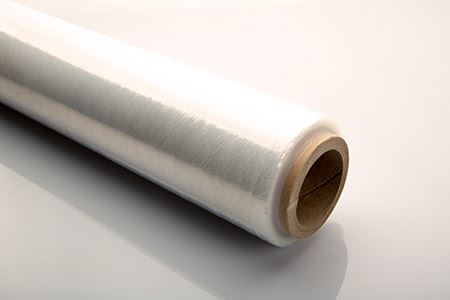If you're preparing for a move and need to protect furniture from dirt and damage, there is a simple solution. Plastic wrap, also called stretch wrap or stretch film, is a cheap, easy, and effective method of protecting furniture like sofas, beds, and heavy appliances.
Here's how you can use plastic wrap properly for moving to keep your things safe.
What is Plastic Wrap?
Plastic wrap is a versatile packing material that can be used to bind, bundle, and protect items when you're moving or storing them. The flexible plastic film safeguards your furniture from dirt, grease, scratches, dings, and nicks. Because it only sticks to itself, it won't leave behind any residue as some packing tape will.
You can get plastic wrap from most major hardware stores like Lowe’s or Home Depot, UPS Stores, and moving supply retailers. It’s available in 5-inch, 10-inch, 15-inch, and 20-inch widths.
What is plastic wrap used for?
Plastic wrap is the mover's swiss army knife. During a move, it can be used to bundle items together, to secure power cords or appliance attachments, and to palletize shipments.
Plastic wrap can also be used to protect couch or bed fabric from dirt or tears. It also holds furniture pads in place when you’re moving heavy appliances or dressers.
It is also used to keep doors and drawers closed. You can wrap it around a refrigerator when you move it to keep the doors in place. It’s also handy for securing bureau drawers and china cabinet doors.
How to Use Plastic Wrap for Moving
Using plastic wrap for moving is intuitive - just like using packing tape. But there are some tricks to doing it right.
Here's how to use stretch wrap for furniture to make sure that it is shielded for your move:
Clean and Dry Your Furniture
Make sure everything is clean and completely dry before using stretch wrap for furniture. Dirt or debris trapped under protective wrapping can cause stains and scratches.
For upholstered furniture like couches, vacuum and wipe with a damp cloth. Let it dry before wrapping this furniture
For wood furniture, wipe off dust with a dry cloth. For leather pieces, vacuum using a soft attachment, wipe down with mild soap and water and apply a leather conditioner. Let it dry before wrapping.
Disassemble Your Furniture
Before you stretch wrap your furniture, remove any detachable parts to make your pieces easier to load and carry. Separate table leaves and remove tabletops and chair legs.
Wrap table leaves in moving blankets and secure with packing tape and plastic wrap. Roll chair legs in a moving blanket so that the legs are individually covered by the blanket. Parts should not be able to touch each other. Secure the outside with tape and plastic wrap.
Stretch Wrap is Simple to Use
While packing furniture containing heavy pieces, like a sofa or china cabinet, tuck a long strip of plastic wrap into a secure place (like inside a drawer or in a sofa crevice). Hold the roll on the inside of both ends, and walk around the piece, letting the roll unwrap. It should secure the tucked strip into place.
Be Aware of Furniture Corners
No matter how sturdy your furniture or appliance, corners are always susceptible to damage when moving. But it's not just your furniture that’s at risk of getting damaged.
Unprotected corners can scrape against walls and doorways - not the kind of housewarming gift you’re looking for. For extra protection, use plastic wrap for packing items to secure foam padding or cardboard before wrapping moving blankets and more plastic wrap onto your furniture.
Use Plastic Wrap to Secure Drawers and Doors
Whether or not you remove doors and drawers before moving, plastic wrap is an invaluable tool. When you remove doors or drawers, wrap them in a moving blanket and secure with plastic wrap.
If you leave drawers and doors on your items, you can tightly cover it with plastic wrap. Make a rope-like strand and tie it to a handle or shut it in the door or drawer. Wrap the item several times to secure all movable openings.
How to use Plastic Wrap on Wood or Leather Furniture
Wood and leather are delicate surfaces that need a little extra care when stretch wrapping. Applying plastic wrap directly to leather or wood can trap condensation and potentially ruin your furniture.
If you are moving in high temperatures, the plastic wrap could also melt and stick to your piece. To protect your leather or wood furniture, simply wrap the pieces in furniture pads or moving blankets before applying stretch wrap to secure the pads in place.
Wrapping Artwork
Once you learn how to use stretch wrap, you can use it not just for furniture, but other items as well. And while expensive art should be professionally packed, many household pictures and paintings can be safely packed as a DIY job.
After wrapping your artwork carefully in foam padding, wrap the piece in plastic wrap. Remember, you should never apply plastic wrap (or bubble wrap) directly to artwork; always use foam padding or packing paper as a barrier.
Hiring Professional Movers
Don't want to deal with stretch wrapping your furniture? Why not hire professionals to do it for you? There are many movers and shipping companies who specialize in packing and handling the logistics of moving.